This week’s blog come from Victoria Haddock, a recent graduate, and our second Thomson-Walker intern….
I am currently approaching the end of my fourth week of a ten-week internship working on the Thomson-Walker collection of medical portrait prints at the CRC conservation studio here at the University of Edinburgh.
I graduated earlier this year from the MA paper conservation course at Camberwell College of Arts and have been fortunate to have been quite busy over the summer with various short term contracts and was overjoyed to have been offered this opportunity here. It has been quite a whirlwind of new people to meet, things to learn and see in the last month and I’m sad to think it has already passed by so quickly.
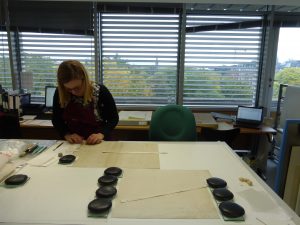
Victoria in the conservation studio
There is certainly no fear of me running out of work to do though, with a collection of approximately 2500 prints to work through! I’m the second of a planned series of interns who will have to remove these prints from their current storage, where some anonymous person decades ago lovingly spent hundreds of hours taping all of these prints onto board and paper which has now become very acidic and brittle and prevents further conservation work or digitisation projects taking place. Like many conservation projects, I have to undo all of this work done with the best of intentions previously, and throw the unsuitable board unceremoniously into the recycling bin. You can read about the importance of good housing in this blog by Special Collections Conservator, Emily.
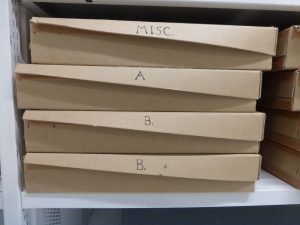
Boxes of prints, before treatment in acidic boxes
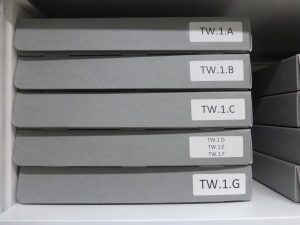
Boxes of prints, after treatment in acid-free boxes
Following the procedures outlined by Samantha Cawson, the first Thomson-Walker intern (here is a link to her blog where she explains everything – with puns!), most of the adhesive tape (a paper gummed tape mainly) can be easily removed by applying lens tissue packages containing CMC (carboxymethyl cellulose) for anything up to 30 minutes, and peeling away the carrier.
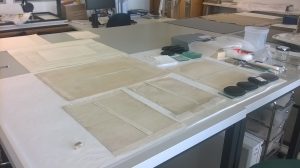
Prints, during treatment
It has been a great experience so far, and I have been fortunate to have gone on a tour of the National Library of Scotland’s conservation studio, be part of some of the studio tours here and the conservation taster days run for the students. It is a great place to work as there is always something amazing being brought in to the studio and there is also a fabulous view, which as many conservators will know, that not being consigned to a cold basement is a rare and wonderful thing!
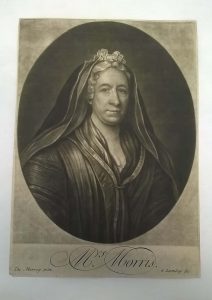
Print, after treatment






